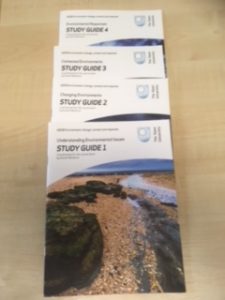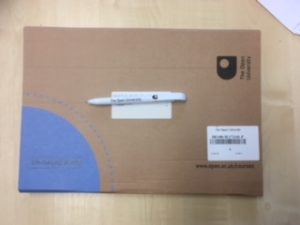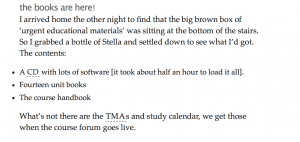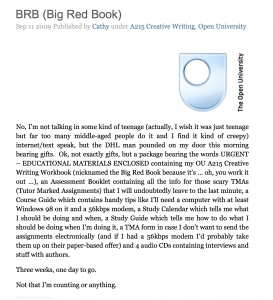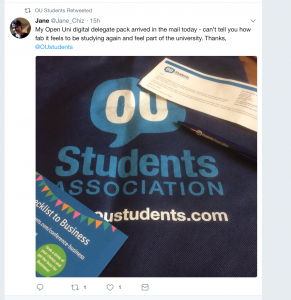50 objects for 50 years. No 4. The PT3
Saturday, June 30th, 2018To the bafflement of many conversations at The Open University are littered with acronyms. Students do not simply write an assignment they submit a TMA. Their tutor (called an AL) completes an Assessment Summary file known as a PT3. It is this latter item that is Object Number 4.
As a teenager in the 1970s I well remember my mother, an OU student, scuttling across town late at night in order to deliver her TMA to her tutor by midnight. A decade later, by then a tutor, I used to lie in bed listening to the letterbox rattling as TMAs (not from my mother, she was an OU graduate by then) came through at midnight and later. Now TMAs are submitted electronically, not by post, and the PT3 forms are easier to read. The Tutor would write on the top copy, pressing hard enough for the words to be legible on the other carbon copies beneath. Copies of the comments went to the student, the Staff Tutor, the tutor and I think that there was a copy stored somewhere deep in a vault in Milton Keynes.
Teaching through the PT3 and comments on the scripts has long been an important element of the OU’s work. Students do not just get ‘satis’ or ‘could try harder’, they get maybe 500 words of considered, individually-focused material. This is a conversation about the work of the student. Many value the comments more than the mark. This object was strongly recommended to me by a former student who told me how pleasing, daunting, exciting it was to get that form back and feel that she was engaged in a dialogue with a tutor.
The comments and mark are checked by a ‘monitor’ to ensure that the tutor is supporting the learner. The tutor’s line manager then checks what the monitor, the student, the tutor have all written and offers advice to the tutor. When concerns were raised by ALs about the status of the PT3, the Teaching Framework Lead, Professor Claire Turner, stated ‘I strongly recognise the excellent feedback that ALs give to their students to help them learn’.
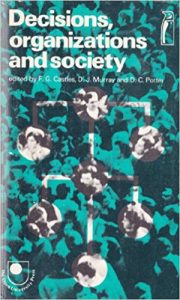
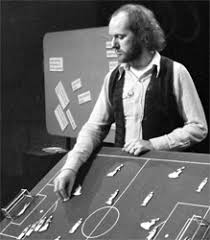
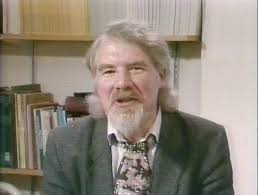 The OU was cast into the mould of the 1970s and 1980s and has found it hard to escape. Creating a new image, renewing the brand, has not been aided by internal jokes which have bolstered the clichés. This Faculty Emergency Neckware Resource Centre, complete with half-a-dozen ties behind glass and a small hammer, suggests that men dominated the faculty, that the Dean of that faculty, Mike Pentz enjoyed the same status as Jennie Lee, one of the OU’s founders, and that there were at least six separate occasions when staff might be required to appear in ties but that the rest of the time, stained lab coats, worn corduroy trousers and sandals worn with socks were the norm. The OU module ‘
The OU was cast into the mould of the 1970s and 1980s and has found it hard to escape. Creating a new image, renewing the brand, has not been aided by internal jokes which have bolstered the clichés. This Faculty Emergency Neckware Resource Centre, complete with half-a-dozen ties behind glass and a small hammer, suggests that men dominated the faculty, that the Dean of that faculty, Mike Pentz enjoyed the same status as Jennie Lee, one of the OU’s founders, and that there were at least six separate occasions when staff might be required to appear in ties but that the rest of the time, stained lab coats, worn corduroy trousers and sandals worn with socks were the norm. The OU module ‘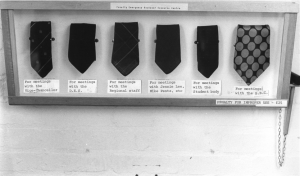
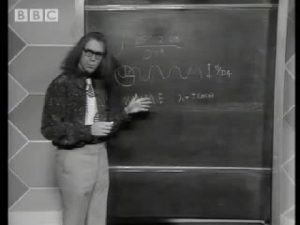
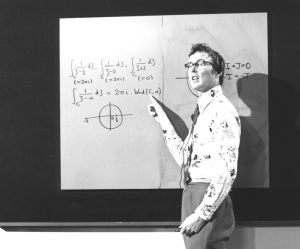
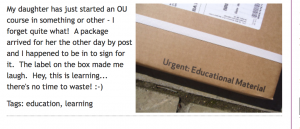 The contents are unknown and there is room for speculation. What is inside? There have been records, cassettes, video disks, computers, models of the human brain and of course study guides. These ones are for U216.
The contents are unknown and there is room for speculation. What is inside? There have been records, cassettes, video disks, computers, models of the human brain and of course study guides. These ones are for U216.